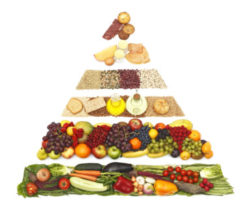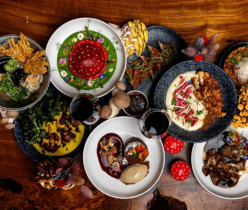Today, the world is health-conscious, and foods free from gluten have become a crucial part of life, not just a trend. Millions are seeking overall health, wellness, better digestion, and energy levels. The descriptive lifestyle move is a gluten-free diet. If you have celiac disease, which is gluten intolerance, or simply have a desire to boost your diet, you should learn about the advantages of a gluten-free diet.
What Is Gluten?
Gluten is a kind of protein present in “wheat, barley, and rye.” It gives bread a tiny soft texture. Most people think gluten is no problem. But for the people, particularly for those who are suffering from celiac disease or gluten sensitivity. It is very terrible for them. When someone with gluten bigotry eats it, their body reacts badly. This can lead to fatigue, headaches, bloating, or even chronic skin problems. It affects the gut function and absorption of nutrients.
What Is a Gluten-Free Diet?
A “gluten-free diet” means cutting out all foods that contain gluten. That includes:
- Bread, pasta, and pasties made with wheat
- Barley, rye, and malt liquor
- Most cereals and sauces that use wheat as a thickening element
Don’t worry, there are a lot of healthy and tasty replacements! Now, you can discover “gluten-free cookies, and even pancakes, etc.,” that taste just as good as the actual object. Natural foods, fruits, vegetables, rice, corn, potatoes, beans, fish, eggs, and dairy are generally gluten–free. Your task is to learn how to combine them in your meals.
Health Benefits of a Gluten-Free Food
Most people who change their diet to a gluten-free diet detect a large difference in how they actually feel when they have no disease. Here are a few reasons why:
1. Better Digestion
A gluten-free diet can reduce bloat and problems and calm your digestive system. People reported feeling calm and minor bloating after eating a gluten-free diet
2. Additional Energy
When your body isn’t irritated by gluten, it can use that energy for something else, making you feel more active.
3. Clearer Skin
Some people notice their acne spots or rashes disappear when they eat a gluten-free diet. It’s not a wonder, but a low problem in the gut frequently helps your skin glow naturally.
4. Sharper Focus and Mood
—Your gut and brain are linked! Many people feel less vague and more attentive after reducing gluten because of reduced inflammation and healthier nutrition.
5. Weight Stability
While gluten-free isn’t routinely “low-calorie,” many people notice they lose weight simply because they start consuming extra natural, less refined foods.
Easy Gluten-Free Foods to Enjoy
You don’t have to give up flavor or variety. Here are some healthy and tasty gluten-free options to include in your daily meals:
A gluten-free diet doesn’t have to be limiting. There’s a profusion of naturally gluten-free foods that deliver all the nutrients your body needs.
1. Naturally Gluten-Free Grains
- Rice (brown, white, wild)
- Quinoa
- Buckwheat
- Millet
- Corn
- Amaranth
2. Fresh Fruits and Vegetables
All fruits and vegetables are naturally gluten-free. They supply essential vitamins, minerals, and antioxidants.
3. Protein Sources
- Fresh meats, poultry, and fish (avoid breaded or processed varieties)
- Eggs
- Legumes such as beans, lentils, and chickpeas
- Nuts and seeds
4. Dairy and Alternatives
- Milk, cheese, butter, and yogurt (check labels for additives)
- Plant-based alternatives like almond milk or coconut yogurt
5. Gluten-Free Flours
- Replace wheat flour with gluten-free options such as
- Almond flour
- Coconut flour
- Rice flour
- Tapioca flour
- Sorghum flour
- These alternatives work beautifully for baking and thickening sauces.
Common Mistakes to Avoid
Opening a gluten-free diet can be exciting, but here are a few things to avoid:
“Relying on refined gluten-free snacks.” Many are rich in sugar and carbs and little in nutrients. Hold to the entire foods if possible. “Skipping fiber.” Gluten-free diets can be low in fiber; foods like beans, seeds, and vegetables
“Not reading labels.” Gluten is present in sauces, soups, and even soy sauce—always check labeling.
Existing Gluten-Free the Relaxed Way
At first, going gluten-free might feel restrictive. You’ll want to eat bread or pizza, and that’s okay. But once you study a rare simple swap, it becomes second nature. You can still enjoy your favorite foods, but in a different way, like gluten-free pancakes for a Sunday morning breakfast. Brown rice is a replacement for pasta meals. Almond cookies made at home instead of a wheat-based diet. It’s not about losing out; it’s about searching for what kinds of foods your body feels are best.
Final Thoughts
A gluten-free diet is a fresh beginning, not a trend, for many people. It is the way to analyze after eating what your body truly feels. And how to nourish your body more perfectly. If you feel exhausted, bloated, or inactive, try a gluten-free diet for a week. Give attention to how your body reacts; it might surprise you. Healthy eating isn’t about strict rules; it’s about learning what truly makes you feel good. For many people, a gluten-free diet is more than just physical health—it’s mental clarity and calm energy.



